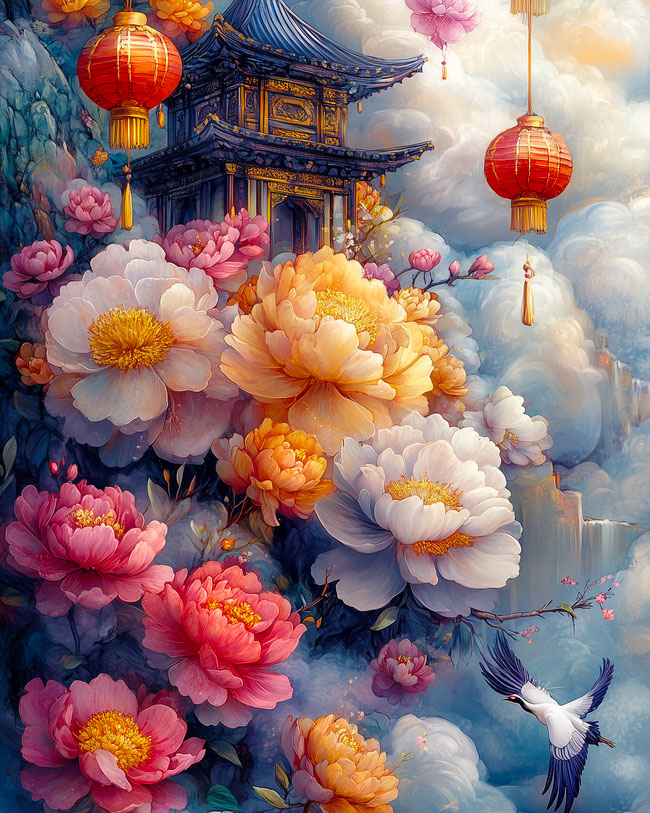The poetry and art in the Peony Garden
- 2025-06-16
- AI IMAGES
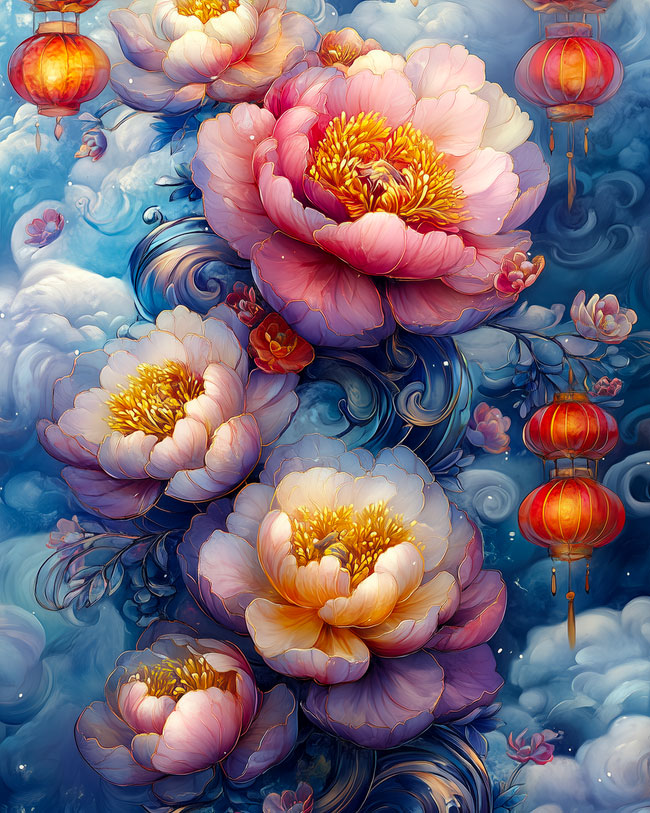
In traditional Chinese culture, flowers and cranes have always occupied a unique position. Flowers bloom, symbolizing prosperity and hope, while cranes represent longevity and purity. When these two elements meet under the brush, what is presented is a picture that transcends the mundane world and is serene and distant. Amidst a mountain with layers of verdant peaks, pavilions are hidden among blooming peonies. A few cranes dance gracefully, their poetic charm flowing, as if leading us through time and space into a fairyland in our dreams.
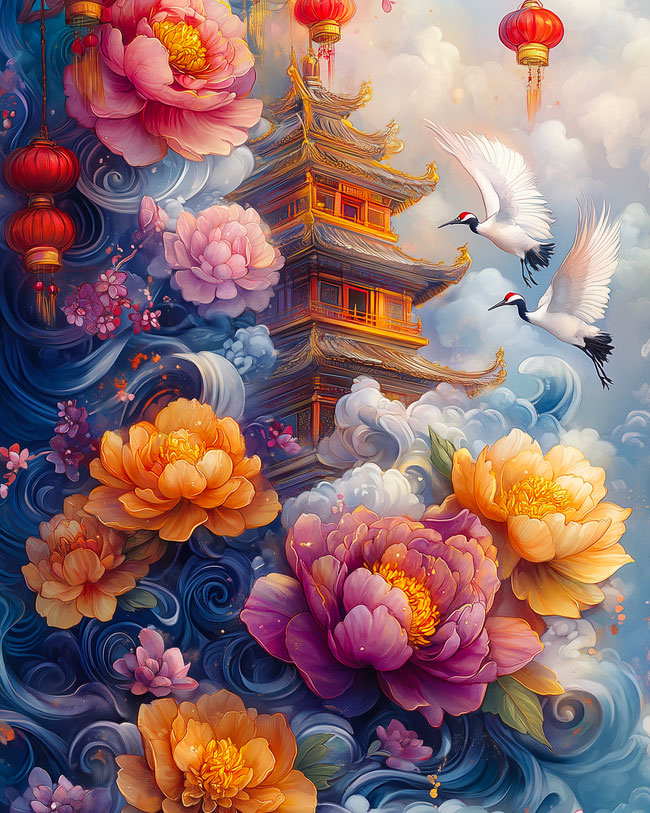
The original intention of creating this set of illustrations originated from my love for traditional Chinese culture. Since ancient times, peonies and cranes have been classic symbols in culture and art. The peony is known as the "King of Flowers", representing wealth and prosperity. The crane, with its elegant posture and the legendary symbol of longevity, has become the embodiment of good fortune.
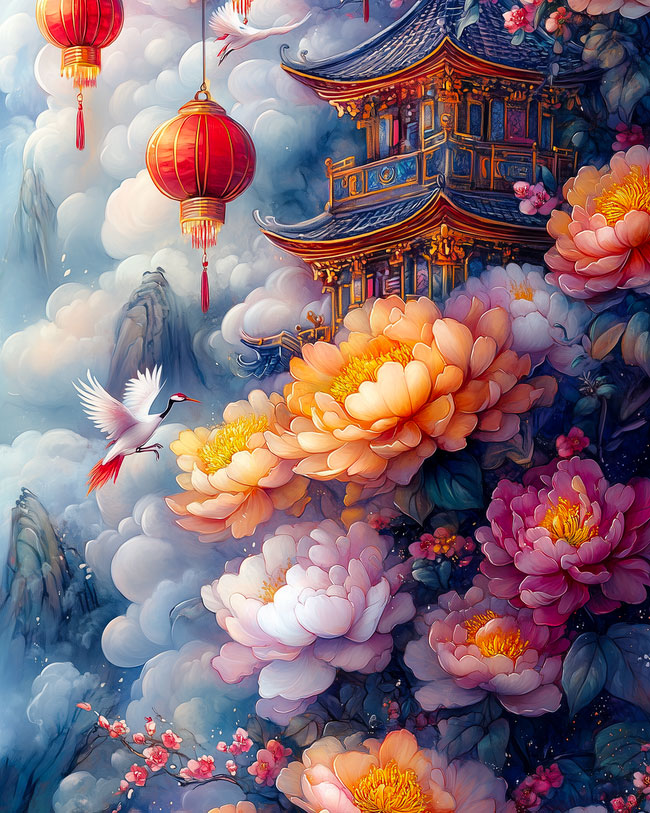
In the early stage of creation, I went through a large amount of materials about traditional garden design and natural ecology. The pavilions, terraces, towers and flowers in the garden form a poetic living space, while the elegant figure of the crane infuses vitality into the entire picture. In this painting, what I hope to present is a blend of the classical and the natural, as if it were a flowing poem, allowing viewers to take a moment away from the busy modern life and return to inner peace.
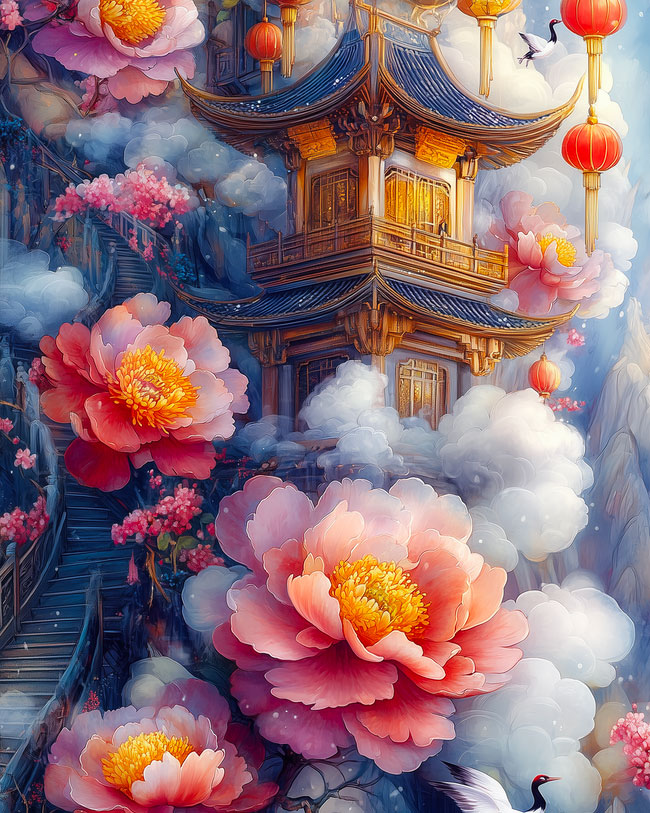
The peony occupies a dominant position in the picture. The picture is mainly in deep red, golden yellow and pinkish-white, depicting the splendid scenes of different varieties of peonies in full bloom. Each peony is meticulously crafted, from the curling of the petals to the layering of the stamens, embodying the harmonious beauty of nature in every detail. The gradual change of colors makes the picture more layered, making people feel as if they were in an endless sea of flowers.
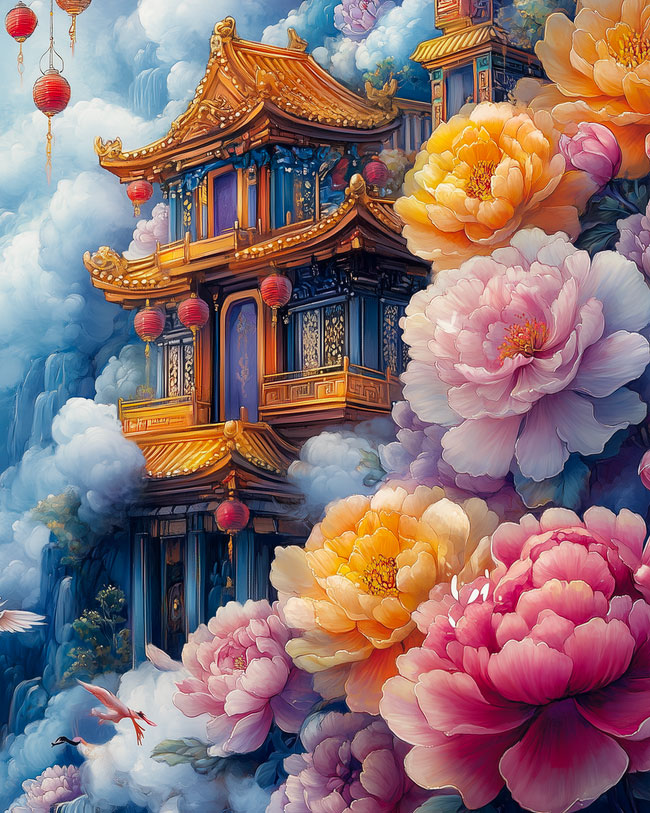
The cranes in the painting either spread their wings and fly, or lower their heads to groom their feathers, or stop among the pavilions, creating a perfect contrast between movement and stillness. Their wings are outlined with simple and smooth lines, and every feather on the wings is depicted delicately and realistically, as if they would flap their wings and fly high in the next second. The crane not only serves as an embellishment in the picture but is also the key to the overall liveliness of the scene.
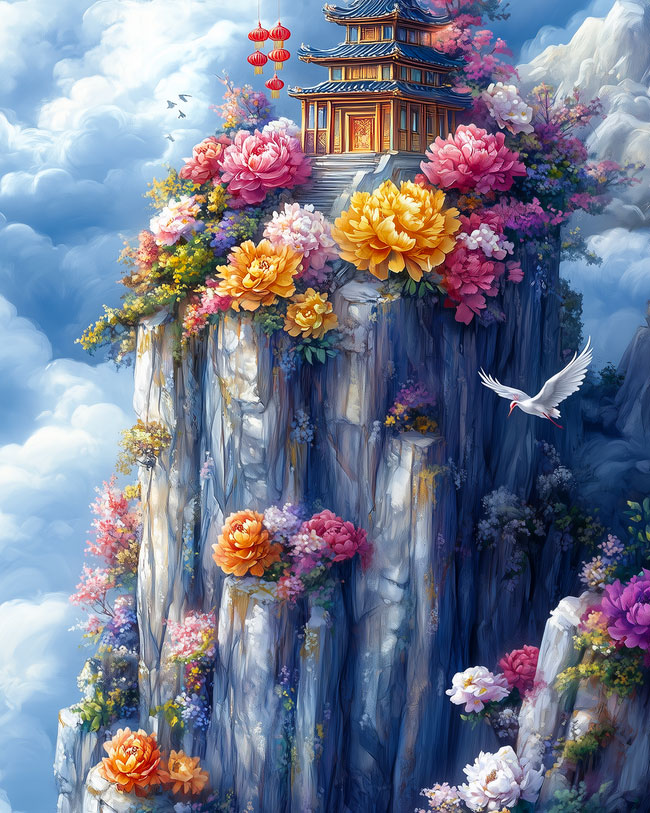
The pavilion is located at the center of the picture, hidden among the peony flowers, surrounded by layers upon layers of green vegetation, appearing and disappearing intermittently. The design inspiration of the pavilion comes from the gardens of the Jiangnan region, featuring upturned eaves, brackets and carved window lattices as the main characteristics, exuding a classical beauty. This small pavilion is not only the visual focus of the picture, but also symbolizes a sense of belonging and seclusion from the world.
